Velleman VTTEST 7 Handleiding
Velleman
Niet gecategoriseerd
VTTEST 7
Bekijk gratis de handleiding van Velleman VTTEST 7 (16 pagina’s), behorend tot de categorie Niet gecategoriseerd. Deze gids werd als nuttig beoordeeld door 30 mensen en kreeg gemiddeld 4.6 sterren uit 15.5 reviews. Heb je een vraag over Velleman VTTEST 7 of wil je andere gebruikers van dit product iets vragen? Stel een vraag
Pagina 1/16

VTTEST7 VELLEMAN
1
VTTEST7 - BATTERY TESTER
1. Introduction
To all residents of the European Union
Important environmental information about this product
This symbol on the device or the package indicates that disposal of the device after its lifecycle could harm
the environment.
Do not dispose of the unit (or batteries) as unsorted municipal waste; it should be taken to a specialised
company for recycling.
This device should be returned to your distributor or to a local recycling service.
Respect the local environmental rules.
If in doubt, contact your local waste disposal authorities.
Your new is a sensitive and accurate device for testing batteries under charge. You can test standard zinc VTTEST7
carbon, alkaline, mercury, silver oxide, lithium and nickel cadmium batteries.
2. Operation
a) Select the correct battery type and voltage with the recessed range switch. Examples:
- move the range selector to the position labelled "1.5V AA D" if you wish to test AA-C- - - -, C or D batteries of 1.5V.
- select the "9V" tion to test rectangular 9V-posi -batteries.
- select the "BUTTON CELL 1.5V" position to test mercury, silver or alkaline button cells.-
- select the "LITHIUM 3V" position for lithium button cells.-
- -C-select the "1.5V AA D"-position to test nickel cadmium batteries of 1.25V and read the value on the lowest of
the three scales on the analogue display.
The value indicated on the meter is the load current drain placed on the battery during the check.
CAUTION: Selecting the wrong range will yield inaccurate results. You may also damage the device in the process.
b) Place the red probe tip (+) against the positive (+) battery terminal and the black probe tip ( ) against the negative (- -)
battery terminal.
CAUTION : Mind the polarity indications when testing your batteries!
Select the correct range (see above). Use the following procedure to test your batteries:
- Place the battery's negative ( ) terminal against the 's negative ( ) contact and touch the battery's - VTTEST7 -
positive (+) terminal with the red probe tip (+).
- In order to test rectangular 9V-batteries : place the battery's negative ( ) terminal against the 's negative - VTTEST7
(-) contact and place the battery's positive (+) terminal against the 's positive (+) contact.VTTEST7
- In order to test button cell batteries: insert the battery in the slot on the side of the device. Make sure the negative
(-) pole is facing up and press the brown switch on the front panel.
CAUTION : Observe the following safety prescriptions in order to avoid all damage to the button cell being tested:
- Do not push the brown switch when using the probe tips to test a button cell.
- Do not allow the red probe tip (+) to contact the black probe tip ( ) when using the 9V- -contacts to test button cells.
c) Read the analogue display to determine the condition of the battery.
- Use the upper scale ("REGULAR") for measuring regular zinc carbon and alkaline batteries.
- Use the centre scale ("BUTTON CELL LITHIUM") for measuring mercury, silver oxide, alkaline and lithium -
button cells.
- Use the lower scale ("NICKEL CADMIUM") for measuring rechargeable nickel cadmium batteries.

VTTEST7 VELLEMAN
2
d) The battery needs to be replaced (or recharged) if the indicator needle is in the red REPLACE zone. The battery has
sufficient capacity left if the needle ends up in the green GOOD zone. Consider replacing the battery if the needle
comes to rest between the oblique lines of the "REGULAR" scale.
Note that the device can test most battery types. However, you should not use the VTTEST7 to test motorcycle or car
batteries, lead batteries and 6V and batteries for 12V- -lanterns.
e) The needle should be aligned with the black dot on the far left hand side of the upper scale when no batteries are -
being tested. If not, you should adjust the zero position by turning the zero position screw on the front panel with a -
screwdriver.
3. Specifications
Range
Load Current Drain
Min. Voltage for GOOD zone
BUTTON CELL 1.5V
1mA
1.125V ± 0.09V
AAA- N 1.5V
50mA
1.125V ± 0.09V
AA-C- D 1.5V
150mA
1.125V ± 0.09V
LITHIUM 3V
1mA
2.25V ± 0.18V
6V
10mA
4.50V ± 0.36V
9V
10mA
6.75V ± 0.54V
12V
10mA
9.00V ± 0.72V
15V
10mA
11.25V ± 0.90V
22.5V
10mA
16.875V ± 1.35V
4. Maintenance
The VTTEST7 is a precision instrument: handle it with care and keep the following prescriptions in mind:
• Water contains minerals capable of corroding electronic circuits. Therefore, you should not expose the device to
water and wipe it dry immediately if it should get wet.
• Do not store the device in hot locations. Excessive temperatures may damage the device or the tested batteries.
• Do not drop the device in order to prevent permanent damage to the circuit boards and the housing.
• Do not store the device in a dusty or dirty environment in order to prevent premature wear of moving parts.
• Do not use solvents or abrasives to clean the device. Wipe it with a soft cloth moistened with a mild water-and soap -
solution.
• Consult qualified personnel in case of malfunction. Do not open the device yourself, as the does not VTTEST7
contain any parts that are to be serviced by the user.
The information in this manual is subject to change ithout prior notice.w
VTTEST7 - BATTERIJTESTER
1. Inleiding
Aan alle ingezetenen van de Europese Unie
Belangrijke milieu-informatie betreffende dit product
Dit symbool op het toestel of de verpakking geeft aan dat, als het na zijn levenscyclus wordt weggeworpen,
dit toestel schade kan toebrengen aan het milieu.
Gooi dit toestel (en eventuele batterijen) niet bij het gewone huishoudelijke afval; het moet bij een
gespecialiseerd bedrijf terechtkomen voor recyclage.
U moet dit toestel naar uw verdeler of naar een lokaal recyclagepunt brengen.
Respecteer de plaatselijke milieuwetgeving.
Hebt u vragen, contacteer dan de plaatselijke autoriteiten inzake verwijdering.

VTTEST7 VELLEMAN
3
Uw nieuwe VTTEST7 is een gevoelig precisie instrument dat batterijen test onder belasting. U kunt standaard zink- -
koolstof- - -, alkaline , kwik , zilveroxide , lithium- - -en nikkel cadmium- batterijen testen.
2. Bediening
a) Selecteer het juiste type en de juiste spanning met de verzonken bereikschakelaar. Voorbeelden:
- plaats de bereikschakelaar in de "1.5V AA stand om AA-C- -D" - - -, C of D batterijen van 1.5V te testen.
- selecteer de "9V" stand om rechthoekige 9V- -batterijen te testen.
- selecteer de "BUTTON CELL 1.5V" stand om k of alkaline knoopcellen te testen.- wik-, zilver- -
- - - selecteer de "LITHIUM 3V" stand voor lithium knoopcellen.
- -C- -selecteer de "1.5V AA D" stand om nikkel cadmium batterijen van 1.25V te testen en lees de waarde af van de -
onderste van de drie schalen op de analoge display.
De naald duidt de geteste laadstroom van de batterij aan.
OPGELET: De resultaten zijn onnauwkeurig indien u het verkeerde bereik selecteert. Dit kan tevens leiden tot
beschadiging van het toestel.
b) Plaats de rode meetpen (+) tegen de positieve (+) batterijklem en de zwarte meetpen ( ) tegen de negatieve (- -)
batterijklem.
OPGELET: Respecteer de polariteitsindicaties wanneer u uw batterijen test!
Selecteer telkens het juiste bereik (zie hierboven)! Zo test u uw batterijen:
- Plaats de negatieve batterijklem ( ) tegen het negatieve contact ( ) van de en raak de positieve (+) - - VTTEST7
batterijklem aan met de rode meetpen (+).
- -Om rechthoekige 9V batterijen te testen: plaats de negatieve ( ) batterijklem tegen het negatieve ( ) contact van- -
de VTTEST7 en plaats de positieve (+) batterijklem tegen het positieve (+) contact van de VTTEST7.
- Om knoopcellen te testen: stop de batterij in de opening aan de zijkant van het toestel. De negatieve ( ) pool -
moet zich aan de bovenkant bevinden. Druk vervolgens op de bruine schakelaar van het frontpaneel.
OPGELET : Respecteer de volgende veiligheidsvoorschriften om beschadiging van de geteste knoopcellen te
vermijden:
- Druk niet op de bruine schakelaar wanneer u de meetpennen gebruikt om een knoopcel te testen.
- De rode meetpen (+) mag de zwarte meetpen ( ) niet aanraken wanneer u de 9V- -contacten gebruikt om knoopcellen
te testen.
c) Lees de toestand van de batterij af op de analoge display.
- Lees de bovenste schaal af ("REGULAR") wanneer u gewone koolstof en alkaline batterijen test.zink- -
- Lees de middelste schaal af ("BUTTON CELL - LITHIUM") wanneer u gewone zink-, zilveroxide- - , alkaline en
lithium- knoopcellen test.
- Lees de onderste schaal af ("NICKEL CADMIUM") wanneer u herlaadbare nikkel-cadmium batterijen test.
d) De batterij moet worden vervangen (of opgeladen) indien de naald tot stilstand komt in de rode REPLACE-zone. De
batterij beschikt nog over voldoende capaciteit indien de naald in de groene GOOD zone staat. Overweeg -
vervanging van de batterij indien de naald terecht komt tussen de schuine strepen van de "REGULAR" schaal.
Merk op dat de de meeste types batterijen kan testen. U mag het toestel echter niet gebruiken om volgende VTTEST7
types te testen: 6V en 12V batterijen voor zaklantaarns, loodbatterijen of batterijen voor auto's en motoren.- -
e) Het is mogelijk dat de naald in rusttoestand niet samenvalt met het zwarte puntje uiterst links in de bovenste schaal.
In dit geval kunt u de nulpositie bijregelen: draai de nulpositie ef op het frontpaneel met behulp van een -schro
schroevendraaier.
Product specificaties
| Merk: | Velleman |
| Categorie: | Niet gecategoriseerd |
| Model: | VTTEST 7 |
Heb je hulp nodig?
Als je hulp nodig hebt met Velleman VTTEST 7 stel dan hieronder een vraag en andere gebruikers zullen je antwoorden
Handleiding Niet gecategoriseerd Velleman
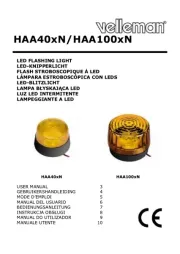
24 Mei 2025
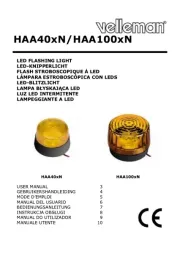
24 Mei 2025
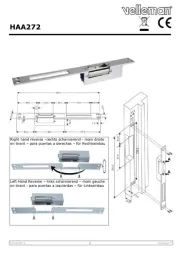
24 Mei 2025
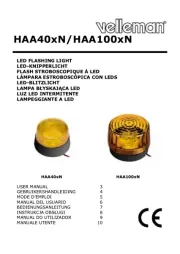
24 Mei 2025
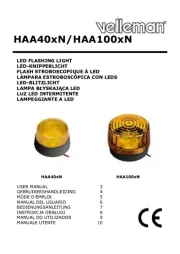
24 Mei 2025

25 Maart 2025
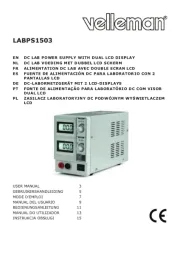
25 Maart 2025
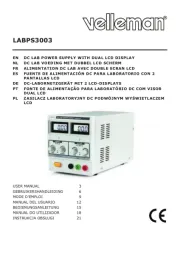
25 Maart 2025
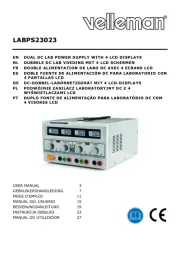
25 Maart 2025
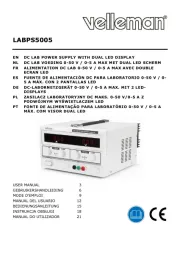
25 Maart 2025
Handleiding Niet gecategoriseerd
- Karma
- WiiM
- DayStar Filters
- X4 Life
- Brighter
- IOIO
- Gitzo
- Homekraft
- Wampler
- Ambient Weather
- ServSense
- Opkon
- Doepke
- Prince Castle
- Brigmton
Nieuwste handleidingen voor Niet gecategoriseerd

31 Juli 2025
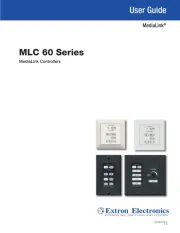
31 Juli 2025
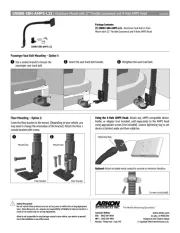
31 Juli 2025
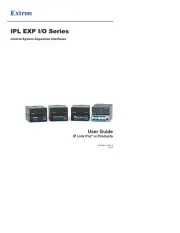
31 Juli 2025

31 Juli 2025
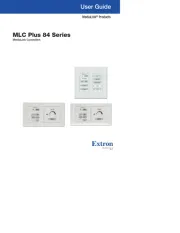
31 Juli 2025
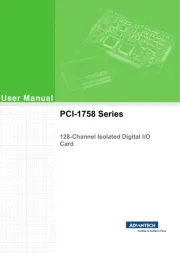
30 Juli 2025
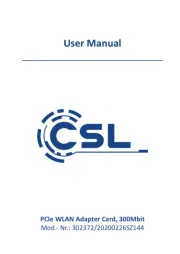
30 Juli 2025
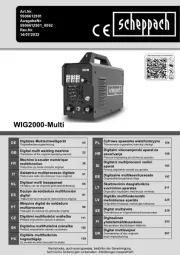
30 Juli 2025
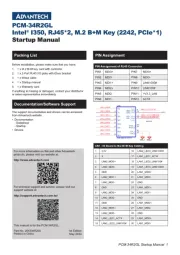
30 Juli 2025